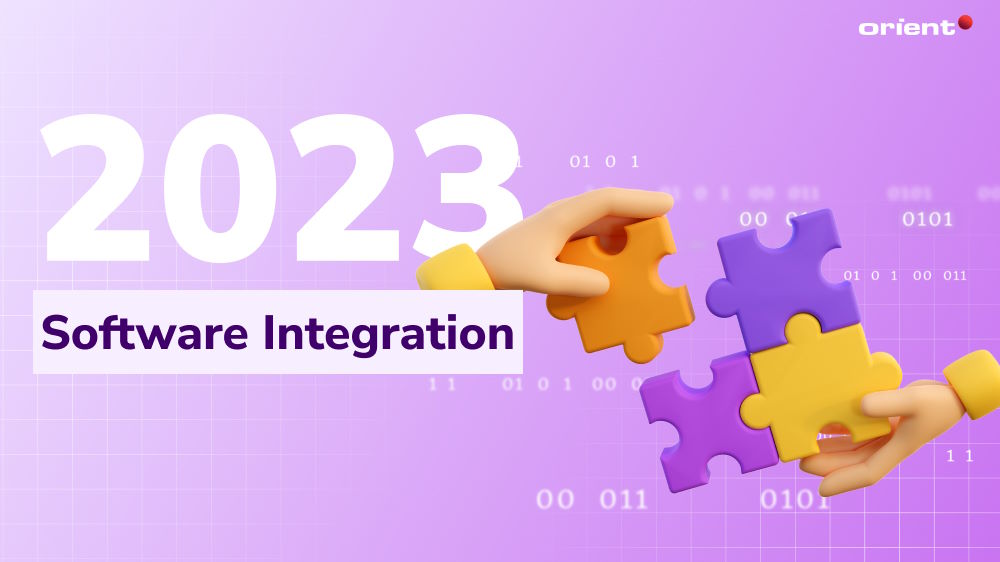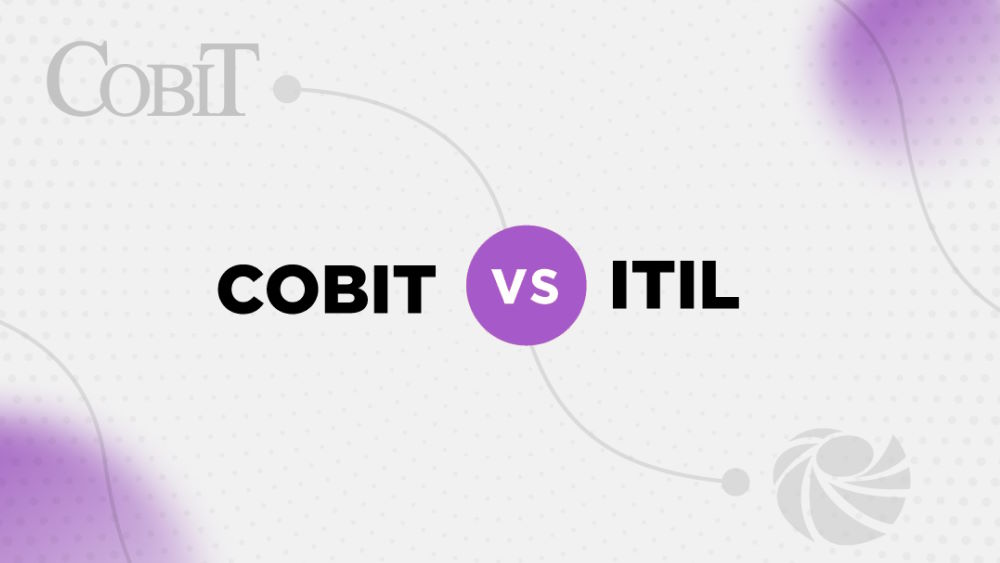Is Business Software Integration a Vital Strategy for Survival in 2024?

Content Map
More chaptersAdvancements in digital transformation have led to the creation of software solutions that prioritize user experience. The increasing number of users guides the rapid growth of customer data volume. Software applications once had smooth processing speeds, and now nothing is left but performance and speed errors.
Manually handling repetitive tasks and entering data into multiple systems without process automation consumes valuable time and effort of the development team, leading to potential errors, decreased productivity, and delayed outcomes.
It’s no secret that connecting inventory applications to e-commerce platforms can provide a seamless order fulfillment experience. Similarly, combining customer relationship management (CRM) software with collaboration tools can greatly enhance communication. These are only a few commonly used software integration examples that can bring about significant positive changes to modern businesses.
Your competitors in the tech industry are already implementing business software integration. If not now, then when? It is time to gain knowledge of system integration, implement it successfully into existing software applications, and quickly create a competitive advantage.
Learn More about Software Integration
Software integration is a broad term that encompasses both the concept of application integration and data integration, which refers to the overall process of combining and connecting different software systems or applications within a business environment. Regardless of the level of product complications, such processes often involve the act of linking multiple software tools, modules, or platforms to enable seamless communication, data sharing, and collaboration between different functions or departments.
Instead of using separate software applications for specific tasks that may lead to data silos and inconsistent information, optimizing system integration is an effective solution to help businesses link disjointed software solutions to sync the abundant data between applications, streamline workflows, and improve overall efficiency. The large amount of real-time data continuously updated and exchanged during the integration process provides a comprehensive picture of the company’s operations, ultimately consulting in more timely actions and better customer experiences.
Software integration can be achieved through tons of methods, such as using application programming interfaces (APIs), middleware, or custom-built connectors. The choice of integration approach depends mainly on the nature of the software applications involved, their compatibility, and the desired level of data sharing and synchronization.
The Impact of Software Integrations on Business Processes

It is no coincidence that businesses of all sizes have an increasing need to automate operational processes with the help of software integration. From migrating a legacy system to handling a vast database, companies adopt modernization and utilize software integration to simplify tedious tasks. There are numerous ways that integration brings valuable values to life. Below are some key points of how software integration benefits your business.
Streamlined Operations and Workflows
Whether you like it or not, user data will continue to expand in the future as the number of visits and app downloads increases over time. Managing customer information based on manpower, once considered the optimal solution, has now become outdated and ineffective.
Instead, businesses tend to leverage software integration tools to eliminate types of manual tasks. By connecting different software applications or systems to work together seamlessly, organizations automate processes and reduce the need for duplicate data entry every time they use a new app, which leads to overall operational efficiency.
Improved Data Quality
Automation brings humans a myriad of benefits. Since the business software integration process, once successfully established, will take place completely automatically without human intervention, businesses can be completely assured of the level of accuracy and consistency of information across multiple systems.
Data in one application will be continuously synchronized and updated in the other application, reducing the risk of discrepancies or inconsistencies occurring when information is manually transferred between systems. Having accurate data enables businesses to have better decision-making and reporting.
Real-Time Visibility
Similar to the advancement of IoT and big data, integration software ensures that data is shared and synchronized across multiple systems in real-time. There is no longer the appearance of old and erroneous information due to the delay of manual data entry as all necessary information is synchronized quickly and closest to real-time, providing real-time visibility into their operations.
Access to the large volume of information available in a single system helps businesses gain a comprehensive view of their business processes, performance metrics, and customer interactions. Real-time data has the ability to provide hidden insights for proactive decision-making.
Enhanced Collaboration and Productivity
No more the phenomenon of data silos where data is stored in isolated systems or departments within an organization leading to information accessibility difficulty. Taking advantage of the integration tool enables different departments within a company to have better communication and collaboration. In-house employees in distinct teams do not need to worry about rumors since all the necessary data is centralized in one place.
Additionally, there is a fact that you might have overlooked. Spending time and effort on re-entering data and information searches across business tools seems like a small task. However, if it lasts for a long time, employees can easily fall into a state of decreased motivation or even burnout.
By connecting software applications, sharing data, and establishing data mapping between data fields, businesses ensure staff members are on the same page, facilitate cross-functional collaboration, and enable a more cohesive work environment.
Cost and Time Savings
With the help of software integration, almost all data-related processes are automated, saving business owners significant resources that would have been dedicated to recruiting specialized personnel. In-house staff have more time to focus on high-value tasks, ultimately promoting company growth.
We do not say software integration provides absolute accuracy in information across business environments. However, it is undeniable that automation is much more effective in terms of accuracy and continuity of data compared to manual efforts. The fewer data errors that occur, the more businesses can minimize the costs associated with data inconsistencies, rework, and inefficiencies.
Signs Emphasize the Need for Integration Software

Since software integration offers businesses tons of benefits, it can be a waste of time to implement unnecessary integration. Does your business really need system integration? To answer this question, let’s take a look at the signs that in-house software strongly needs the help of data integration tools.
Inefficient Workflows and Data Entries
Latest software development technologies open up many new favorable opportunities for businesses regardless of size to optimize production, management, and operation cycles. However, if, until now, your team still spends most of its precious time manually entering data between different software applications, it is a clear sign that your business needs to undergo a transformation with system integration.
Of course, performing repetitive tasks that rely on human effort is not necessarily a bad thing, but it is considered one of the actions leading to resource wastage and negatively impacting project outcomes. On the other hand, automation through integration software can save time, reduce errors, and improve efficiency.
Inconsistent Customer Experience
Inconsistent customer experience represents situations where users encounter difficulties when interacting with different touchpoints within a business environment. This situation often occurs with software applications that lack proper linking and integration.
For instance, imagine a customer contacting customer service to get information about their order processing. However, due to disconnected systems that lack data synchronization, the support team may miss customer’s order history or previous interactions, leading to a disjointed and frustrating experience in issue resolution.
This situation persists, causing users to gradually lose faith in the company’s products. Software integration, in turn, fosters customer loyalty, improves brand reputation, and drives repeat business.
High IT Maintenance and Support Costs
Managing and maintaining the performance of a single application is already a challenging task. Doing this for multiple systems that operate independently at the same time is even more problematic as it incurs a variety of costs arising from the need to maintain, update, and troubleshoot each system individually, which can be time-consuming and resource-intensive.
If your company is using most of its resources and personnel to maintain and support different software separately within the business environment, it is time to reform processes to reduce maintenance costs and complexity with integration.
Difficulty in Reporting and Analytics
User data, especially real-time information, plays an important role in gaining meaningful insights and strengthening the decision-making process. However, traditional data entry, manual management, and storage of information systems have unintentionally caused many businesses to lose this valuable opportunity. As staff need time to receive and synchronize user-related information between applications, the final data has the potential to deviate from real-world operations, leading to inaccurate overall reports.
If generating reports or extracting useful insights from disparate systems becomes a time-consuming and challenging task, integration software can enable unified data analysis and reporting, simplifying decision-making processes.
Business Growth and Scalability
Enterprises constantly develop and innovate to meet market needs. When growing to a certain level, there will come a time when your software system can no longer handle massive data volumes as they are continuously generated from various sources, such as sales, marketing, customer service, and operations. Business software integration is now essential to centralize and consolidate this data, making it easier to manage, analyze, and extract valuable insights.
Expanding the business operations scope can also include adding new systems and applications or acquiring other companies. This can pose a challenge when it comes to incorporating new systems or technologies without causing disruptions. If you need an effective approach to provide a scalable foundation that allows organizations to seamlessly incorporate new systems or technologies, make sure you take software integration into consideration.
How to Implement Software Integrations to Maximize Business Value

Implementing software integrations can be a complex process that may require the expertise of dedicated developers from third-party vendors. However, it can be successfully accomplished with careful planning and execution. Check out these steps to guide you to success through such processes.
- Identify Specific Data Integration Needs: Determine which systems or applications need to be connected and what data or functionality should be shared between them.
- Select Integration Technology: Choose the appropriate integration technology or platform, including Integration Platform as a Service (iPaaS), middleware solutions, custom APIs, or connectors provided by specific software vendors that align with your requirements.
- Plan Integration Architecture: Collaborate with IT teams and stakeholders to come up with a robust integration architecture that outlines the connections, data flow, and interactions between the systems involved.
- Test and Validate Integrations: Deploy the testing version and thoroughly test the integrations before deploying them in a production environment through performing unit tests, integration tests, and end-to-end tests.
- Deploy and Monitor Integrations: Deploy the official integrations to the production environment following a deployment plan. Monitor the system operations closely after deployment to identify any issues, performance bottlenecks, or data inconsistencies.
With the ongoing digital transformation, software integration has become a key component of modern business operations. While such a process may come with its fair share of challenges, such as heterogeneous systems and environmental modifications, the potential rewards of successful integration are worth the investment.
There is no one-size-fits-all software integration method, as business priorities and project requirements are at least somewhat different. Make sure you clearly understand your unique integration needs and follow the plan strictly. Popular software integration tools like Zapier, Boomi, SnapLogic, etc., can help you simplify the process and achieve desirable outcomes. In case you are still in the middle of nowhere and would like to explore more about integration use cases, feel free to contact Orient Software for the best advice.







